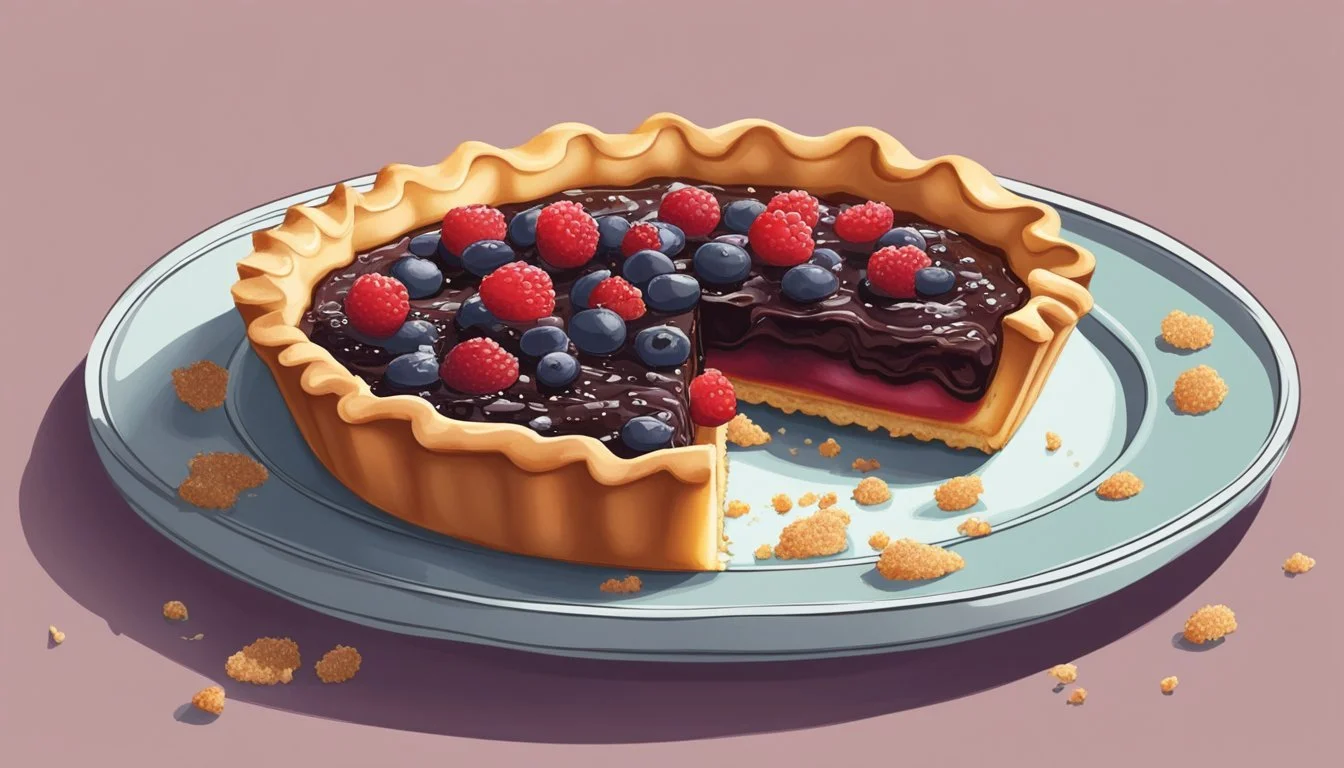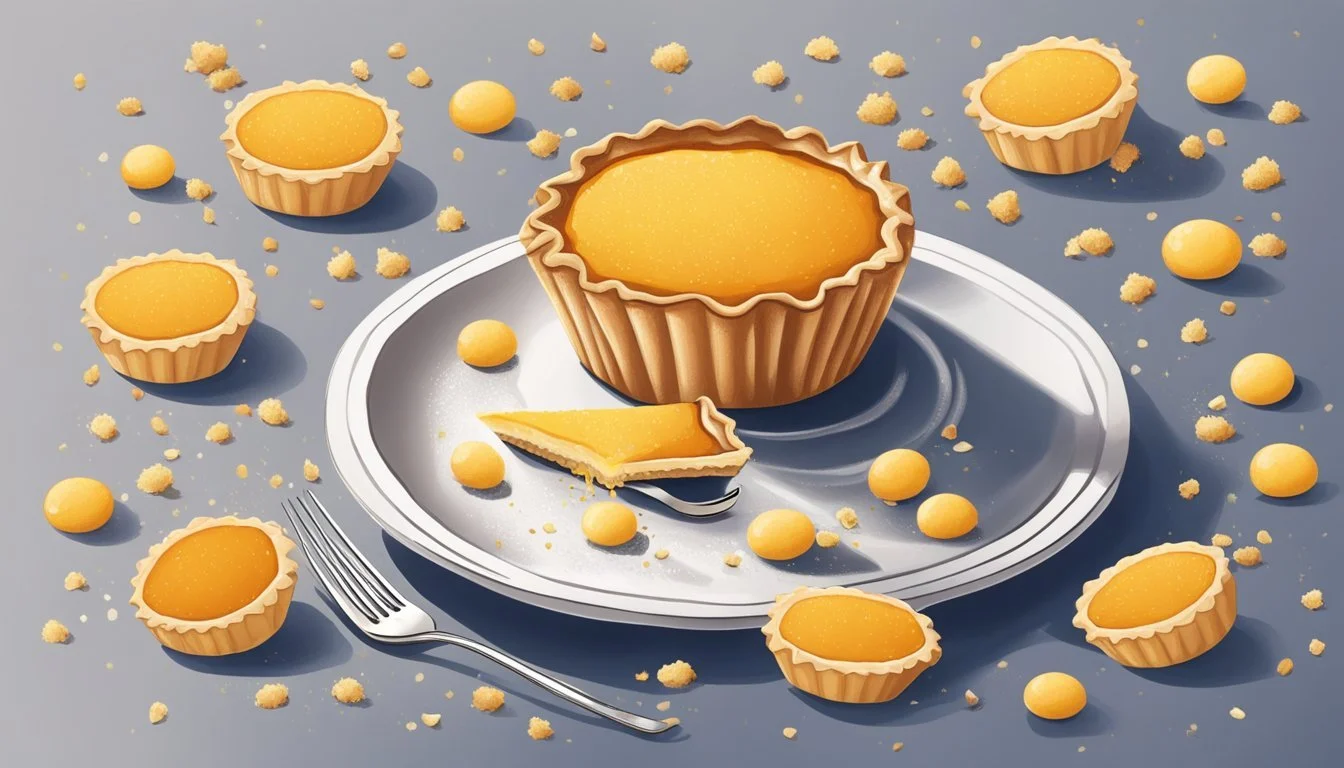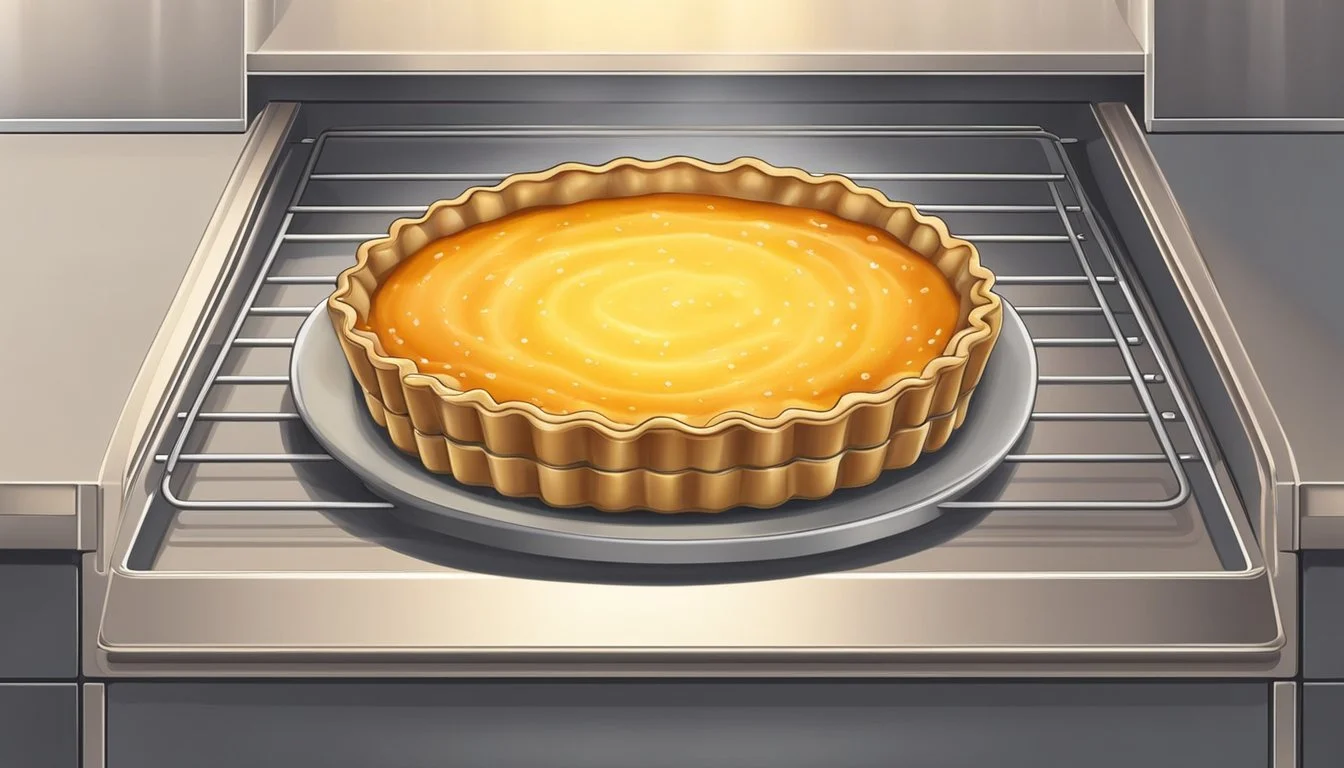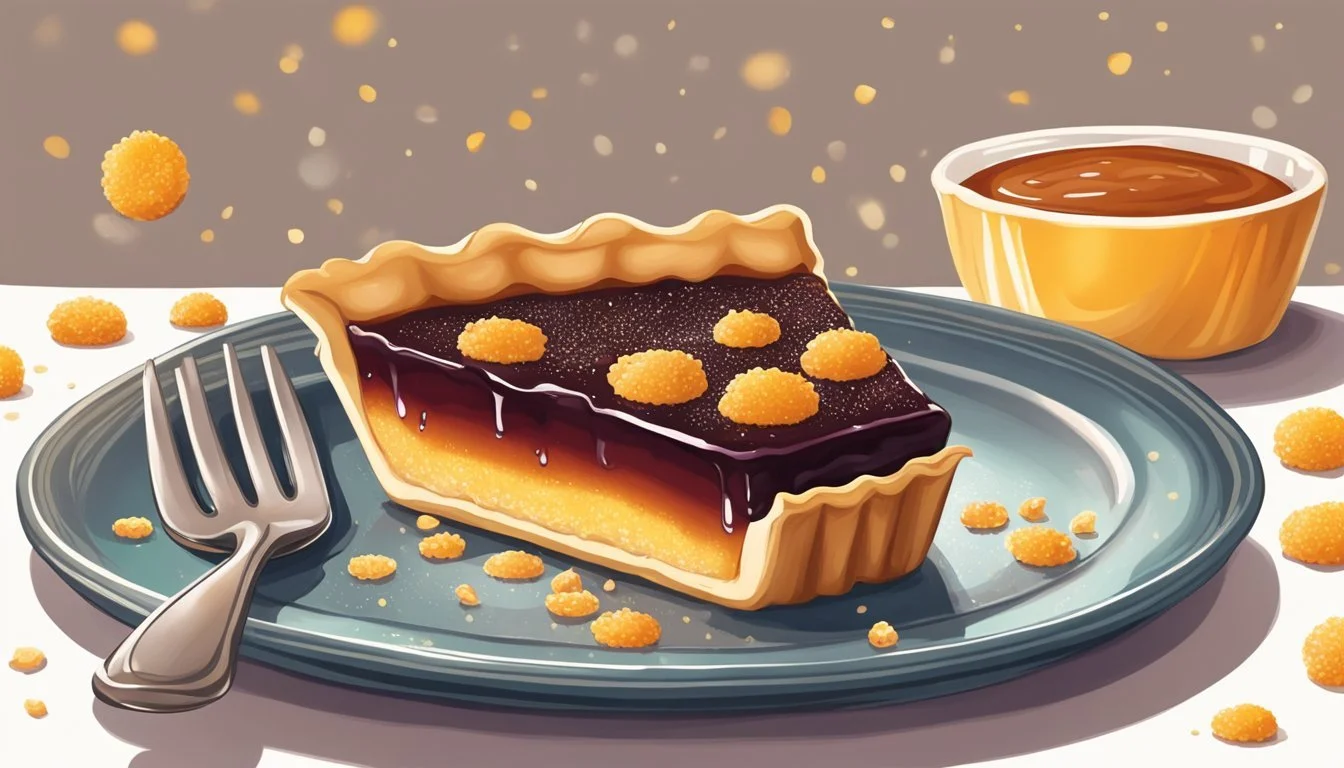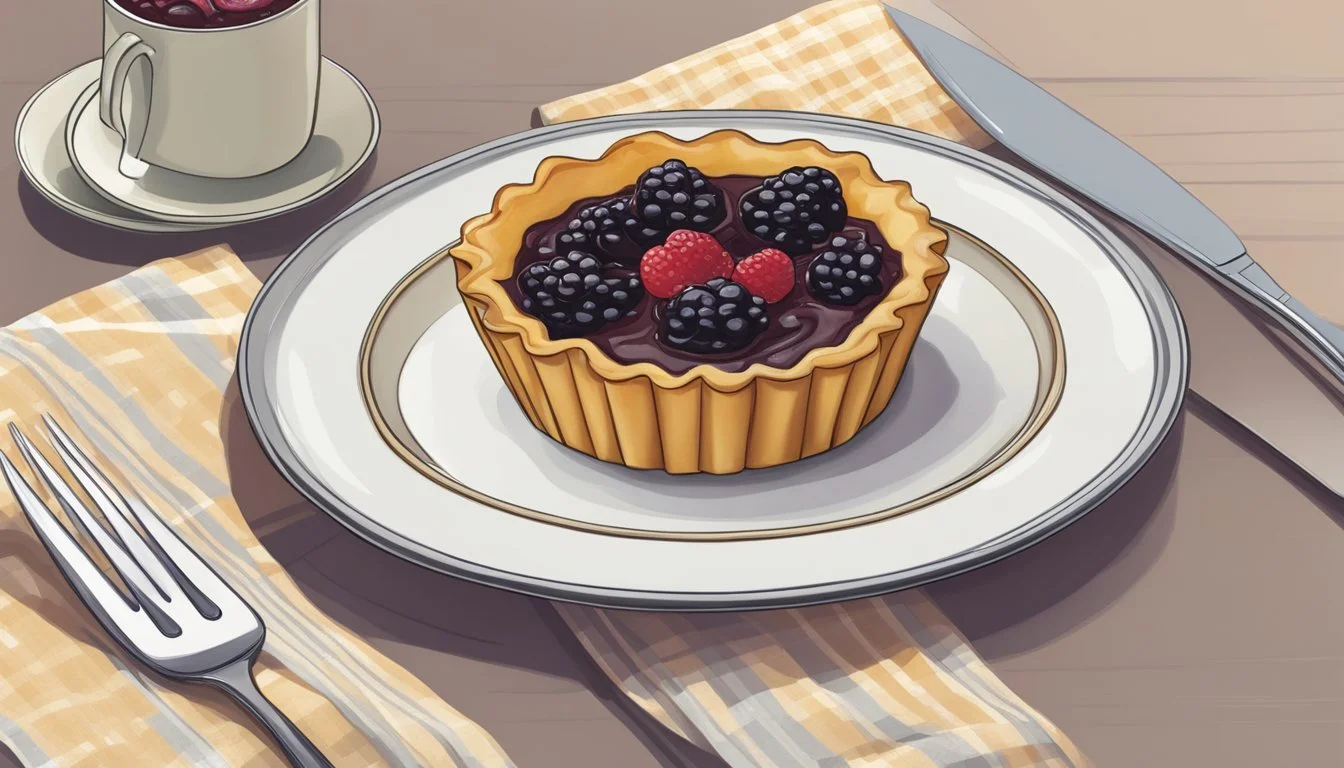How do you eat a jam tart?
Unveiling the Perfect Technique
Eating a jam tart is a delightful experience that combines the pleasure of sweet fruit preserves with the satisfaction of a buttery, flaky pastry. These traditional British treats are often enjoyed during afternoon tea or as a dessert, and come in various fruit flavors such as raspberry, apricot, or strawberry. The key to appreciating a jam tart lies in its simplicity; a well-balanced tart should offer a harmonious blend of the sweetness from the jam and the rich, crumbly texture of the pastry.
To eat a jam tart, no special utensils or preparations are necessary. They are commonly served at room temperature and can be eaten by hand. Biting into the pastry allows one to enjoy the contrast between the firm, baked edges of the tart and the soft, gooey center filled with jam. The pastry crust should be firm enough to hold its shape but tender enough to melt in one's mouth, while the jam provides a burst of fruitiness that complements the buttery flavor of the crust.
When selecting a jam tart, it's essential to consider the quality of both the pastry and the jam. A well-made tart features a crust that's golden and evenly baked, with a jam that's not overly sweetened, allowing the natural fruit flavors to shine. Whether enjoying a single tart as a treat or sharing a variety among friends, the charm of the jam tart lies in its delicious simplicity and the joy it brings to those who partake in this sweet, classic confection.
Ingredients Overview
When preparing a jam tart, the selection and balance of ingredients contribute to the final taste and texture. Utilizing high-quality components and understanding the role each one plays ensures a delicious outcome.
Examining Key Ingredients
The key ingredients for a jam tart include flour, sugar, salt, unsalted butter, and an egg. The mix of flour and fat forms the base of the tart, which is called pastry or crust, while sugar adds sweetness and helps with browning. Salt is a flavor enhancer that balances the overall sweetness of the jam filling. Unsalted butter is preferred for its ability to control the salt content in the recipe and contribute to a flaky crust. Some variations may include egg, which enriches the pastry and can contribute to the pastry's golden color upon baking.
Choosing the Right Jam
The jam is the centerpiece of this tart, offering not only flavor but also an attractive glossy finish. The most popular choices include:
Strawberry jam: A classic choice that provides a sweet and slightly tart taste.
Raspberry jam: Offers a deeper tartness and vibrant color.
Apricot jam: Imparts a sweet-tart flavor with a hint of tanginess.
Fig jam: Provides a richer and deeper sweetness.
Other fruit jams or preserves can be used according to preference. Additionally, flavor enhancements like almond extract, cardamom, or citrus zest (lemon, lime, or orange) could be added to complement the fruit jam's flavors.
Understanding Flours and Fats
The choice of flour and fat directly impacts the texture of the tart crust.
All-purpose flour is commonly used for its structure-forming gluten, which gives the crust its shape and supports the jam.
Fat comes in the form of butter for its flavor and ability to create a flaky texture. The fat should be kept cold to prevent the formation of gluten, promoting a tender bite.
In preparing the pastry, it’s vital to add water sparingly to bind the ingredients without making the dough tough. For a richer crust, some bakers might opt for a mix of butter and a small addition of vegetable shortening to enhance flakiness.
By prioritizing the balance and quality of these ingredients, the resulting jam tart will be both visually appealing and flavorful.
Preparing the Pastry
Preparing the pastry is a crucial step in creating delicious jam tarts. The process involves making the dough, then rolling and shaping it into the perfect base, followed by adding the jam filling.
Creating the Dough
The foundation of any tart is the dough. Shortcrust pastry is commonly used for its crisp and buttery texture once baked. Start by sifting plain flour and a pinch of baking powder into a mixing bowl. Cut cold butter into cubes and add it to the flour. Using fingertips or a pastry blender, work the butter into the flour until the mixture resembles fine breadcrumbs. For added texture and flavor, a small amount of cornmeal or polenta can be incorporated. Drizzle in just enough cold water, stirring with a cold knife, to bring the dough together. When forming the dough, do not overwork it; gentle handling ensures a tender tart.
Rolling and Shaping
Once the dough is made, shape it into a disc and wrap it in plastic. It should rest in the refrigerator for at least 30 minutes. This chilling period allows the gluten strands to relax, yielding a more tender pastry. After the dough has chilled, lightly flour a work surface and roll it out to a thickness of about 3mm. To form the tart bases, use a round cutter slightly larger than your tart mold to cut out discs from the rolled out dough.
Filling With Jam
Distribute the pastry discs into the tart molds, pressing gently to fit. Each tart shell gets a dollop of quality jam. Two teaspoons are generally sufficient, but one can adjust the amount to taste or tart size. Be careful not to overfill as the jam will bubble and spread during baking. If desired, an egg yolk can be whisked and brushed on the pastry edges for a golden shine upon baking. With the jam in, the tarts are ready to be baked according to your chosen recipe.
Baking the Tart
When baking a jam tart, key considerations include properly preheating the oven, carefully monitoring the cook time, and achieving a perfectly golden brown finish on the crust to ensure both optimal flavor and texture.
Oven Preparation
One must preheat the oven to the temperature specified by the recipe, which typically ranges from 180°C to 200°C (350°F to 400°F). It's crucial to allow the oven to reach the correct temperature before placing the tart inside. Utilizing a baking sheet under the tart pan—preferably one with a removable bottom—can help in easy removal post-baking. The inclusion of foil or parchment can also aid in even baking and prevent the jam from burning.
Monitoring Cook Time
Cook time is variable, depending on the size and depth of the tart. Typically, one should allot approximately 20-25 minutes for baking. Surveillance is necessary to prevent over-baking, which can result in a dry or burned tart. Set a timer to remind yourself to check the tart regularly, as different ovens can have variations in temperature.
Achieving Golden Brown
The desirable golden brown finish on the crust is a sign of a perfectly baked tart. To attain this, one may occasionally brush the crust with a light coating of granulated sugar during the last few minutes of baking, if the recipe calls for it. Watching closely during the final minutes of baking is essential, as the transition from perfectly baked to overdone can occur rapidly.
Serving Suggestions
When serving jam tarts, it is essential to balance the sweetness of the jam with suitable accompaniments and ensure that the visual presentation amplifies the appeal of these delightful pastries with their buttery crusts.
Accompaniments
Jam tarts can be enjoyed as they are, but certain additions can enhance their flavor and texture:
Whipped Cream: A dollop of whipped cream adds a luxurious creaminess that complements the fruitiness of the jam or jelly filling.
Sliced Almonds: For a textural contrast, sprinkle sliced almonds over the tarts; they add a nutty flavor and a satisfying crunch.
Marmalade: If seeking a slightly bitter contrast, a small amount of marmalade can be served alongside the jam tart to balance the sweetness.
Frangipane: Incorporating a layer of frangipane beneath the jam gives the tarts an almond-infused richness.
Presentation
The visual appeal of jam tarts is almost as important as their taste:
Dusting: A light dusting of powdered sugar or stone-ground cornmeal can add a sophisticated touch.
Color and Texture: Serve on a contrasting plate to accentuate the vibrant colors of the jam, and arrange the tarts in a pattern for an inviting display.
Garnishes: Fresh berries or mint leaves can provide a fresh visual element that hints at the fruitiness of the tarts.
Storage and Shelf Life
Storing jam tarts correctly ensures they maintain their quality and taste. The shelf life is influenced by the type of filling and storage conditions.
Proper Storage Techniques
Jam tarts should be kept in an airtight container to prevent them from drying out. In the refrigerator, they can typically last up to a week, depending on the freshness of the ingredients used. It is essential to store them in a cool, dry place, away from direct sunlight and heat sources, which can lead to premature spoilage.
Refrigerator Storage: Place tarts in a container, separating layers with parchment paper to maintain texture.
Pantry Storage: For short-term storage, a pantry or cupboard will suffice, but consumption within a couple of days is advisable for optimal freshness.
Freezer Tips
For long-term storage, jam tarts can be frozen, significantly extending their shelf life.
Preparation for Freezing: Cool the tarts completely before wrapping them individually in plastic wrap, followed by a layer of aluminum foil.
Freezing: Place the wrapped tarts in freezer-safe bags or containers. Chart their storage date.
Thawing: Defrost in the refrigerator overnight before serving to ensure even thawing.
The storage method chosen for jam tarts will affect their taste and texture when served. They must be stored properly whether placed in jars, refrigerated, or frozen to maximize their shelf life.
Variations and Substitutions
In the world of jam tarts, versatility comes from experimenting with various fillings, tweaking pastry recipes, and making dietary adjustments. These changes allow a classic treat to dynamically suit personal tastes and dietary needs.
Exploring Different Fillings
Jam tarts offer a canvas for a range of delightful flavors, from the traditional raspberry and strawberry to the more unusual fig or quince paste. One could swap in apricot jam for a tart yet sweet contrast or opt for rich, dark cherry preserves. Rhubarb can give a tart a tangy twist, while a mix of berries can create a more complex flavor profile.
Classic Options: Raspberry, Strawberry
Unique Varieties: Fig jam, Quince paste
Tangy Alternatives: Rhubarb jam
Rich Choices: Cherry preserves
Berry Mixes: A selection of mixed berries
Alternative Pastry Recipes
The base of a jam tart can vary broadly beyond the standard shortbread pastry. For those with a food processor, a crostata recipe might include a combination of flour, butter, and sugar with alternative grain flours for a different texture. Some might opt for a richer crust by incorporating almond extract or a crunchy dimension using coarsely ground cornmeal.
Standard Base: Shortbread pastry
Crostata Variation: Food processor-made dough with diverse flours
Rich Twist: Addition of almond extract
Crunchy Texture: Inclusion of cornmeal
Dietary Adjustments
Adapting jam tart recipes to cater to different dietary requirements often involves substituting ingredients within the pastry or filling. Gluten-free flours can replace traditional wheat flour, while sugar alternatives can cater to those reducing sugar intake. Vegan eaters can look for recipes utilizing plant-based fats in place of butter and egg replacements for binding.
Gluten-Free: Alternative flours such as rice or almond flour
Sugar-Conscious: Natural sweeteners or sugar substitutes
Vegan Friendly: Plant-based fats and egg substitutes
Equipment and Tools
To ensure success in making jam tarts, one must have the correct equipment on hand. This involves using both essential baking tools and understanding how to effectively leverage the design of tart pans to produce optimal results.
Essential Baking Equipment
Mixing Bowl: A quality mixing bowl is foundational for combining pastry ingredients. It should be large enough to handle the flour, butter, and water without spilling over as one mixes.
Food Processor (Optional): While not essential, a food processor can expedite the pastry-making process by quickly combining the butter and flour into a breadcrumb-like consistency.
Baking Equipment Purpose Rolling Pin To roll the pastry dough to the desired thickness Tart Pan or Springform Pan To shape and bake the tart Baking Sheet To provide a stable base for the tart pans in the oven Pastry Cutter or Cold Knife To cut butter into flour and stir the pastry mixture Clingfilm To wrap and chill the dough
Using Tart Pans Effectively
Tart Pan Selection: A tart pan with a removable bottom is ideal, as it makes it easier to remove the tart after baking without damaging its delicate structure.
Preparation: Greasing the tart pan with butter and then dusting with flour or using parchment paper ensures the tart can be easily released after baking.
Baking: Once the pan is filled with pastry and jam, it should be placed on a baking sheet for stability and even heat distribution during the cooking process.
Frequently Asked Questions
In this section, readers will find answers to questions about the preparation, baking, and storage of jam tarts, along with troubleshooting common issues that might arise during the process.
Common Concerns
What is the best way to store jam tarts?
Jam tarts should be stored in an airtight container at room temperature. They typically remain fresh for up to 3 days. For longer storage, they can be refrigerated for up to a week, although this might affect the texture of the pastry.
Can I use any kind of jam for a jam tart recipe?
Yes, one can use various types of jam for jam tarts, including apricot, raspberry, or others. The jam should be of good quality for the best flavor, as it is the highlight of the tart.
Troubleshooting Tips
My jam tart is too crumbly, what did I do wrong?
The tart dough requires careful balance. If it's too crumbly, it might be due to too much flour or not enough butter. Ensure to measure ingredients accurately and mix until just combined to avoid overworking the dough.
Why is my jam leaking out of the tart as it bakes?
Jam leakage can happen if the dough is rolled too thin or if there are cracks in the pastry. Make sure to roll out the dough to the thickness of about a £1 coin and check for tears before adding the jam. If using homemade jam, ensure it's thick enough so it doesn't run out during baking.
Final Thoughts
In this section, we reflect on the essential elements that make a jam tart stand out as a delightful treat. Understanding these can elevate one's appreciation of this classic dessert.
Recapping the Perfect Jam Tart
When it comes to eating a jam tart, the experience is dependent on a few key components: the flakiness of the crust, the sweetness and flavor of the jam, and the overall freshness of the pastry. A jam tart should have a crust that crumbles just right, with a buttery taste that complements the jam. The jam itself needs to strike a balance between sweetness and tartness and should be generously filled to allow for a satisfying bite. Eating the tart soon after it has been baked can make a significant difference in enjoyment.

